Hol Dir den wöchentlichen SPARTANAT-Newsletter.
Dein Bonus: das gratis E-Book von SPARTANAT.
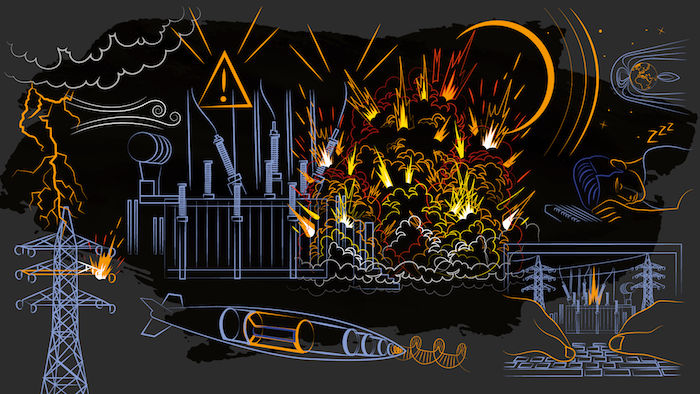
BLACKOUT (3): Land ohne Strom – Mögliche Ursachen für einen Blackout
Was passieren kann, konnte man am 31. März 2015 in der Türkei beobachten.
Was passieren kann, konnte man am 31. März 2015 in der Türkei beobachten. Um 10 Uhr vormittags fiel in 80 von 81 türkischen Provinzen der Strom aus, fast 80 Millionen Menschen waren betroffen. Zunächst vermutete man einen Cyberangriff als Ursache, kurz zuvor wurde Medienberichten zufolge die Website des staatlichen Stromnetzbetreibers gehackt. Öffentliche Verkehrsmittel standen still, Ampeln fielen aus, ein unglaubliches Verkehrschaos war die Folge. Der wirtschaftliche Gesamtschaden belief sich auf rund 700 Millionen Euro. Später wurde versichert, dass Schwankungen im türkischen Stromnetz den Blackout verursacht hatten.
Am 4. November 2006 ging hingegen wegen menschlichen Versagens das Licht aus. Ein Abstimmungsfehler führte um 22.10 Uhr zu einem großräumigen Stromausfall in Europa. Auslöser war eine mangelhaft geplante und nicht ausreichend kommunizierte Abschaltung von Hochspannungsleitungen in Niedersachsen für das Auslaufen eines Kreuzfahrtschiffs. In einer Kettenreaktion gingen daraufhin gleich mehrere Leitungen vom Netz. Etwa 15 Millionen Menschen waren in Deutschland, Frankreich, Belgien, Italien, Österreich und Spanien bis zu 2 Stunden ohne elektrische Energie.
Die Liste ließe sich noch beliebig lange fortsetzen. Sie zeigt, dass ein Blackout durchaus im Bereich des Wahrscheinlichen liegt und jederzeit eine Region, ein Land oder den ganzen Kontinent betreffen kann. Österreich wurde bisher von einem größeren Blackout verschont, sieht man von kleineren regionalen Ausfällen, die mehrheitlich wetterbedingt waren, ab. Dennoch kann es Experten zufolge jederzeit zu größeren Ausfällen aus folgenden Ursachen kommen:
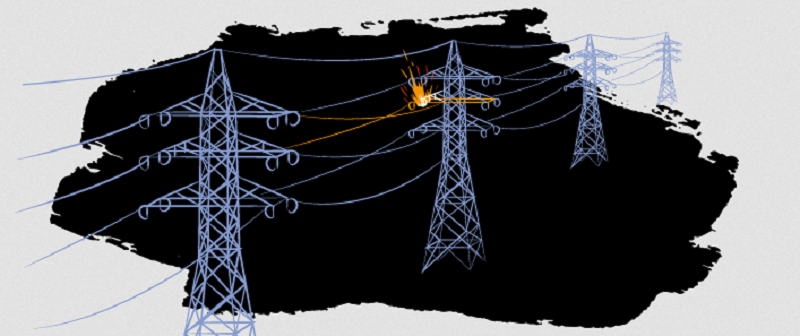 1. Systemkollaps – Unzureichende Netzstabilität
1. Systemkollaps – Unzureichende Netzstabilität
Der Stromverbrauch der Österreicher steigt seit Jahrzehnten deutlich. Grundsätzlich gibt es in Österreich genug Kraftwerke, um den Bedarf zu decken, in den vergangenen Jahren wurden einige Kraftwerke mangels Rentabilität bereits geschlossen oder stillgelegt. Für Notfälle stehen thermische Kraftwerke bereit, die im Falle des Falles zugeschaltet werden können.
Anlass zur Sorge gibt das überalterte Stromnetz. Im Wesentlichen stammt das österreichische Übertragungsnetz nämlich aus der Mitte des vorigen Jahrhunderts. Seit damals ist nicht nur der Verbrauch stark gestiegen, auch die Liberalisierung des Strommarkts hat die Belastung der Netze erheblich verschärft. Österreichs wichtigster Stromlieferant ist Deutschland.
Die Konsequenz ist, dass das Stromnetz an seinen Leistungsgrenzen arbeitet. Es sei vor allem für die heutige Importsituation schlicht nicht ausgelegt, sagt Gerhard Christiner, technischer Vorstandsdirektor des österreichischen Übertragungsnetzbetreibers APG. Nur durch ein ausgeklügeltes Engpassmanagement (EPM) könne der Netzbetrieb noch aufrechterhalten werden, regelmäßig müssten alte österreichische Gaskraftwerke spontan einspringen – was ineffizient und teuer sei.
In den vergangenen Jahren häuften sich solche unvermeidbaren Eingriffe in das System. Vor allem seit 2015 ist ein eklatanter Anstieg dieser sogenannten Redispatch-Maßnahmen zu beobachten.
Ein Ausbau des Übertragungsnetzes wird daher dringend gefordert. Speziell die Nord-Süd-Verbindungen seien bereits jetzt massiv belastet. „Die 380-kV-Leitung in Salzburg ist das Schlüsselprojekt. Diese fehlende Infrastruktur kostet die Volkswirtschaft bereits jetzt zehn Millionen Euro pro Monat – das zahlen wir alle über die Netztarife“, sagt Christiner im Gespräch mit Addendum.
Neben dem Netzausbau sieht Christiner auch den Umstieg auf Strom aus erneuerbaren Energien als unausweichlich an. Auch höhere Preise für umweltschädlich produzierten Strom könnten überlegt werden, Stichwort CO2-Steuer. Allerdings müsse man die Situation stets ganzheitlich betrachten. Es geht also nicht nur darum, saubereren Strom zu produzieren. Es bedarf – und zwar generell – auch der entsprechenden Netze, um ihn dann dorthin zu transportieren, wo er gebraucht wird, etwa von Norddeutschland gen Süden oder von Ostösterreich gen Westen.
Damit ist ein weiteres Problem, die Stromüberproduktion, angesprochen. Attraktive Einspeisetarife für Strom aus erneuerbaren Energien beschleunigten deren Ausbau und führten zu geringeren CO2-Emissionen. Darüber hinaus treten in diesem Bereich stärkere Schwankungen auf, man spricht von Volatilität. Manchmal weht eben mehr Wind oder es gibt weniger Sonnenstunden. Auch mit derlei Problemen haben die Übertragungsnetze vermehrt zu kämpfen.
Stimmen Stromproduktion und -verbrauch nicht überein und wird dieses Delta nicht geschlossen, kann es zu einem Blackout kommen. Diese Gefahr ist laut Florian Maringer, Geschäftsführer der Erneuerbaren Energie Österreich, derzeit aber relativ gering. Aber, so Gerhard Christiner: „Der Grat ist ein sehr schmaler geworden. Wir leben von der Substanz unserer Vorfahren. In dieser Übergangsphase werden wir den derzeitigen Bestand an österreichischen Gaskraftwerken als Netzreserve brauchen. Aber wir brauchen unsere Reserven immer mehr auf, gerade im Netzbereich. Hier müsste mehr koordiniert ausgebaut werden.“
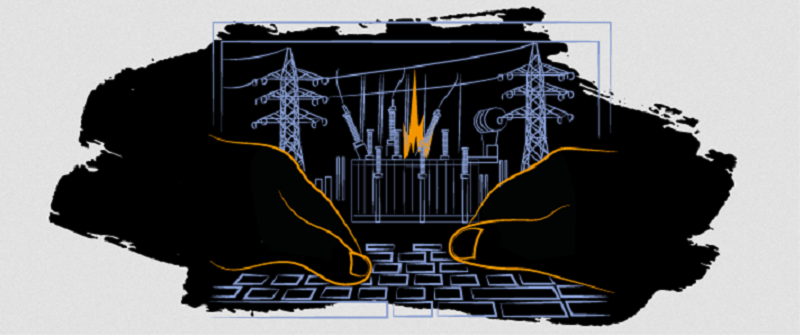 2. Cyberattacken und Terroranschläge
2. Cyberattacken und Terroranschläge
Eine weiteres Gefahrenpotenzial sind Cyberattacken und Terroranschläge. So waren am 23. Dezember 2015 in der Ukraine hunderttausende Menschen in 103 Städten des Landes ohne Strom, 27 Umspannwerke fielen aus. IT-Sicherheitsexperten gehen davon aus, dass ein Cyber-Angriff den Stromausfall ausgelöst hatte. Diese Einschätzung teilen auch Sicherheitsfirmen aus den USA und der Ukraine sowie das Bundesamt für Sicherheit in der Informationstechnik in Bonn. Beweisen konnte man diesen Vorfall freilich nicht, aber das Beispiel zeigt, dass Cyberattacken auf Energielieferanten keine Fiktion mehr sein müssen.
Die Verwundbarkeit des Netzbetriebs wird vor allem durch Digitalisierung („digitales Umspannwerk“) verstärkt. Am 17. März 2018 berichteten Sprecher der US-Homeland Security, dass Russland versucht hätte, in das US-Energienetz einzudringen. Die Hacker hätten dort sogar Spuren hinterlassen, um ihr Können zu demonstrieren. „Der Feind sitzt bereits im System, und die Sabotage kann nach Bedarf ausgelöst werden. Die neue Kriegsführung bedeutet, dass eine Handvoll Leute in Europa das Licht ausknipst“, meinen Spezialisten. Auch würden Hackerangriffe immer wieder mit Erpressungen einhergehen.
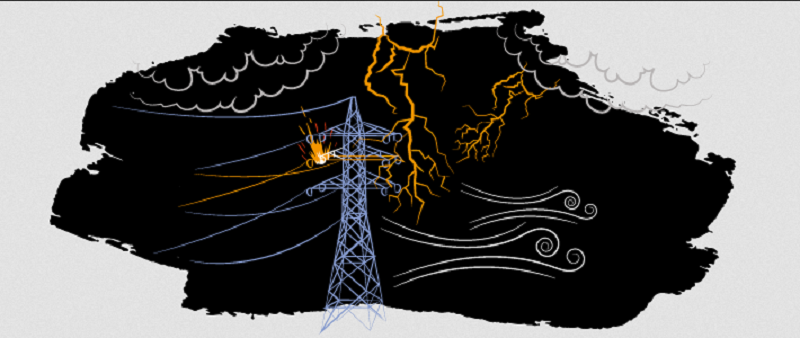 3. Naturkatastrophen
3. Naturkatastrophen
Schwere Gewitter, Überschwemmungen und Stürme könnten die Stromnetze beschädigen und Defekte verursachen, ebenso wie gefrierender Regen, heftige Schneefälle, große Kälte oder Hitze. Gleiches gilt für Elementarereignisse wie etwa Lawinenabgänge, Muren, Felsstürze oder Erdbeben.
So stürzte beispielsweise ein Sturmtief am 25. November 2005 den Westen Deutschlands in ein Schneechaos. Im Münsterland und in Teilen des Ruhrgebiets waren viele Orte von der Stromversorgung abgeschnitten und mehr als 250.000 Menschen von diesem Blackout betroffen. Viele von ihnen hatten bis zu drei Tage keine Stromversorgung, einzelne Gehöfte waren bis zu fünf Tage ohne Strom. Auch der Straßen-, Schienen- und Flugverkehr brach in einigen Regionen des Landes komplett zusammen.
 4. Geomagnetische Stürme
4. Geomagnetische Stürme
Nicht nur „klassische“ Stürme könnten zum Problem werden, auch Sonnenwinde stellen eine Gefahr dar. Diese entstehen durch Plasmaeruptionen und benötigen zwischen 24 und 36 Stunden um die Erde zu erreichen. Wenn diese Welle die Erde trifft, deformiert sie das Erdmagnetfeld und löst einen geomagnetischen Sturm aus. Die heftigen Schwankungen des Erdmagnetfelds induzieren Ströme in ungeschützten elektrischen Leitungen. Das kann Satelliten, Transformatoren von Hochspannungsleitungen und elektronische Geräte zerstören. Ein starker Sturm würde enorme Schäden anrichten und könnte die Stromversorgung großflächig über Monate lahmlegen.
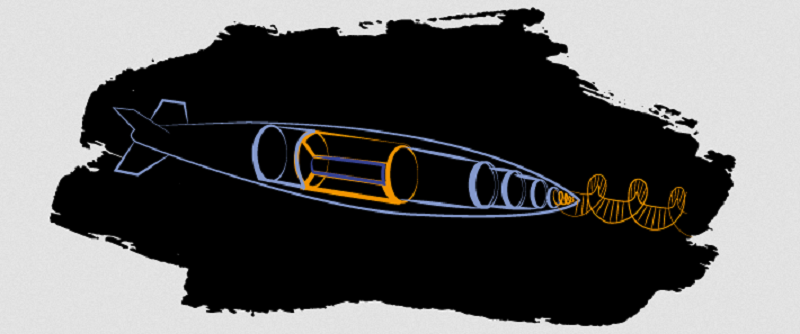 5. Die E-Bombe
5. Die E-Bombe
Ein Anschlag auf die Stromversorgung ist auch mit einer sogenannten E-Bombe möglich. Diese sendet einen hochfrequenten, elektromagnetischen Impuls aus, der jedes elektronisch betriebene Gerät in seinem Einflussbereich auf der Stelle unbrauchbar macht. Die Bombe braucht den Vergleich mit der vernichtenden Kraft eines Blitzschlags nicht zu scheuen: Bei einer Blitzentladung werden Ströme von 30.000 Ampere freigesetzt, bei der E-Bombe sollen es gar eine Million Ampere sein.
Seit 1979 forscht das US-Militär an der Erzeugung und Nutzbarmachung starker elektromagnetischer Impulse. Die Idee stammt aus Atombombenversuchen zu Beginn der 1960er Jahre. Bei der Zündung der nuklearen Sprengsätze in der oberen Atmosphäre beobachteten die Militärs eine starke begleitende Gammastrahlung, die auf alle elektrischen Geräte eine nachhaltige und vernichtende Wirkung hatte. Der nukleare Blackout fand unter dem Eindruck des Kalten Kriegs als EMP (Elektromagnetischer-Puls) Eingang in das Angstvokabular.
Die USA entwickeln im Rahmen des „Counter-electronics High Power Microwave Advanced Missile Project“ (CHAMP), das 2012 angeblich erstmals erfolgreich getestet wurde, kleinere EMP-Präzisionswaffen.
 6. Menschliches Versagen
6. Menschliches Versagen
Schaltfehler in Umspannwerken sowie Berechnungsfehler bei Abschaltungen stellen weitere mögliche vom Menschen verursachte Szenarien für einen Blackout dar.
In der Nacht des 28. September 2003 war Italien plötzlich schwarz. Um 3.27 Uhr fiel im ganzen Land der Strom aus, je nach Landesteil für bis zu 18 Stunden. Die Ursache war ein Netzproblem in der Schweiz. Dort wurde eine Stromleitung durch eine menschliche Fehleinscheidung überlastet und versagte. Dies hatte zur Folge, dass in Italien 57 Millionen Menschen stundenlang ohne elektrische Energieversorgung waren.
Die Stromversorgung basiert auf Systemen, die aufgrund ihrer Komplexität fehleranfällig sind. Es wird kaum gelingen, dauerhaft alle möglichen Ursachen auszuschalten, ein Blackout ist daher durchaus wahrscheinlich. Es wäre wichtig, sich darauf vorzubereiten.
ADDENDUM Artikelserie zum Blackout in Österreich:
Die Einleitung auf SPARTANAT: Österreich übt den Blackout
Teil 1: Es wird sehr schwierig sein, die Kontrolle zu bewahren
Teil 2: Nichts geht mehr – die Auswirkungen eines Blackout
Teil 3: Land ohne Strom – Mögliche Ursachen für einen Blackout
Dieser Artikel wurde zuerst auf ADDENDUM veröffentlicht. Copyright Text: ADDENDUM. Bilder: ADDENDUM. Videobeiträge, Grafiken und Audiobeiträge: ADDENDUM.
ADDENDUM im Internet: www.addendum.org
SPARTANAT ist das Online-Magazin für Military News, Tactical Life, Gear & Reviews.
Schickt uns eure News: [email protected]
Werbung
Hol Dir den wöchentlichen SPARTANAT-Newsletter.
Dein Bonus: das gratis E-Book von SPARTANAT.


